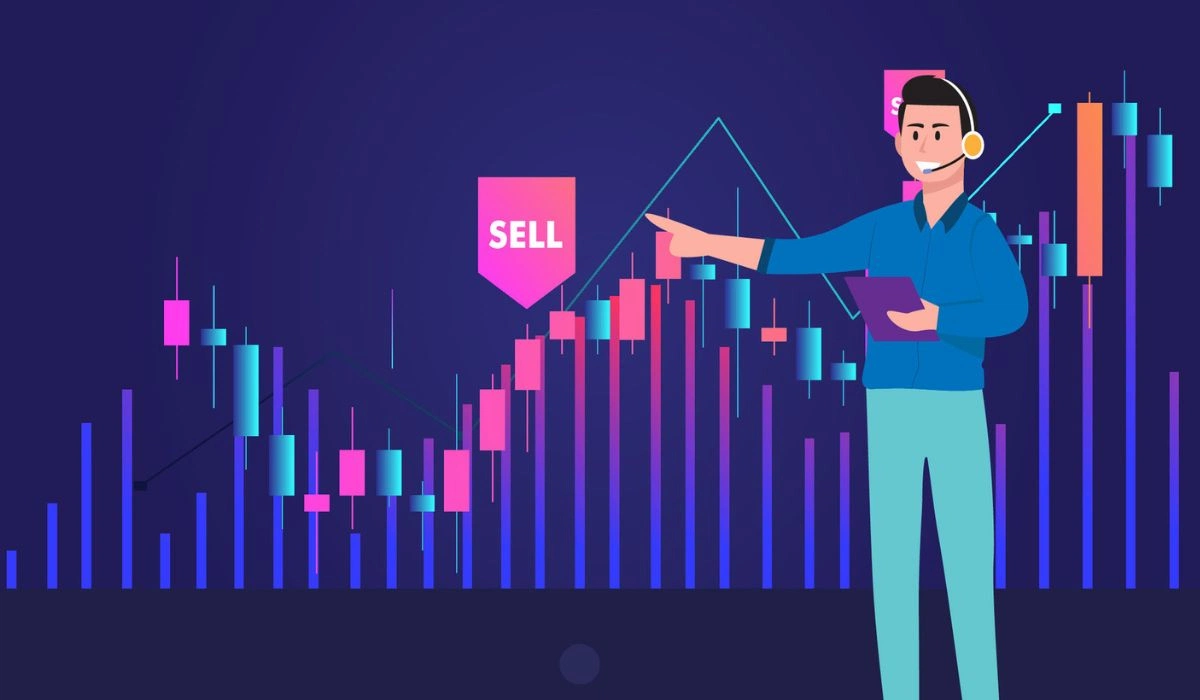With the crypto market evolving daily, the number of investors and traders flocking towards it has also risen exponentially. As the number keeps on increasing with everybody trying to profit off others, it can be difficult to determine what to do, and how to place trades. That’s where the trading indicators come in handy. They are effective tools that can help a trader analyze potential price movements and how to put a trade in them.
This article will explore the top 7 trading indicators in the market and how you can effectively use them in placing your trades. Furthermore, we will also give you insights on how to interpret these indicator results.
What Are Trading Indicators?
A trading indicator is a mathematical calculation that helps traders analyze the price and volume of a digital asset to determine trends and golden trading opportunities in the market. They are mostly plotted on a price analysis chart as lines or bars.
Key Uses
- Identifying Trends: Indicators can help traders identify and analyze certain chart patterns and trends in the market.
- Predicting Price Changes: Trading indicators can help traders forecast future price diversions and movement patterns.
- Determining Entry and Exit Points: Trading indicators can help traders identify when to enter and exit the market to make a profit.
- Investment Evaluation: Indicators can also help traders analyze the price movements of their own assets.

Types Of Indicators
Trading indicators are of many types but can be broadly classified into three. They can help traders analyze price movements and identify potential profit. So, without any further ado, let’s look into the three.
| Trend Indicators | Momentum Indicators | Volume Indicators |
|---|---|---|
| These are tools used in technical analysis to identify the direction in which the price of an asset moves. | It is a technical analysis tool that measures at what rate an asset’s price went up or down. | It is a technical analysis tool that measures how many shares or contracts were traded during a specific time frame. |
| It helps traders identify whether the market is in an uptrend, downtrend, or sideways trend by analyzing the historical price data of the coin. | It helps traders identify potential trend shifts and determine whether a trend is gaining or losing momentum. | It helps traders analyze buying and selling pressure in the market, which can help determine the trend direction. |
| It use mathematical calculations based on closing prices over a brief time frame, creating a line or other visual representation indicating where the market is going. | These are calculated by subtracting previous closing range prices from the current closing price over a specific time. | It simply calculates the number of contracts traded in a specific time frame and displays it in the price chart in the form of bars. |
Top Indicators To Boost Your Trading Profit
In trading, indicators play a key role in analyzing the market trends. However, there are countless indicators in the market. Most traders don’t know which one to employ to increase prediction accuracy. That’s why we are bringing you the top 7 indicators in the market and how to use them.
1. Moving Average
The moving average is a technical analysis tool used to determine the trends in which an asset’s price moves in the market. It is calculated by taking the average of an asset’s closing prices over a specific time frame. This average is updated each passing day as more and more new prices are added.
How To Use
- Choose a time frame for your moving average calculation, such as 20 days, 50 days, or 200 days, depending on your trading strategy.
- Most charting platforms will easily allow you to plot these moving averages to your chart.
Interpretation
- When the price crosses over the moving average, it could be considered a potential buy signal.
- When the price goes below the moving average, it could be considered a potential sell signal.
2. Relative Strength Index (RSI)
RSI is a technical indicator that helps traders identify when an asset is overbought or oversold. It is mainly used to determine the strength of an asset’s price, helping trader identify when to buy or sell an asset to increase their potential Return On Investment (ROI). The RSI is calculated by comparing the average gain and loss in the market value of an asset over a set period of time.
Use Cases
- Traders use the RSI value with other indicators to identify trends in the market.
- They can also look for variations between the RSI and price to see when a trend might be reversing.
- They can also use the RSI to find possible entry and exit regarding trading opportunities.
Interpretation
- Overbought: When the RSI is over 70, it indicates an overbought scenario marking a selling signal.
- Oversold: When the RSI is below 30, it indicates an oversold scenario marking a buying signal.
- Positive Reversal: When the RSI makes a lower low and the price makes a higher low, it indicates bullish momentum, marking a buy signal.
- Negative Reversal: When the RSI makes a higher high, but the price makes a lower high, it indicates a bearish trend, marking a sell signal.
- Failure Swing: When the RSI fails to make a higher high or lower low, despite the price making a higher high or lower low, it symbolizes a weakening trend with reversal expected around the corner.
3. OBV (On-Balance Volume)
The OBV is a technical indicator used to measure the relationship between price and volume. It is calculated by finding a cumulative trading volume of an asset by adding volume on days when the price closes higher and subtracting volume on days when the price goes down. While using OBV, it should be kept in mind that a large volume spike can cause it to fluctuate.
Uses
- Function: OBV tracks the cumulative volume of an asset over time.
- Market Sentiment: The OBV indicator determines the buying and selling of a specific asset in the market.
Interpretation
- Rising OBV: Indicates strong buying pressure in the market, suggesting a potential uptrend.
- Falling OBV: Indicates strong selling pressure in the market, suggesting a potential downtrend.
- Divergence: When the OBV moves in the opposite direction as the price, it can signal a trend reversal.
4. Parabolic SAR
Parabolic SAR (Stop and Reverse) is a technical indicator that displays a series of dots on the price chart. It is used to identify potential trend reversals and determine the direction of a trend by showing whether the dots are above or below the price level.
Uses
- It is used to identify trend changes and potential entry and exit points in a market, especially during strong trending periods.
- It can be used as a dynamic trading stop-loss by placing the stop order at the SAR level.
Interpretation
- Buy Signal: When the dots are below the price level, it indicates an upward trend.
- Sell Signal: When the dots are above the price level, it indicates a downward trend.
5. Moving Average Convergence & Divergence (MACD)
MACD is a technical analysis tool that helps traders identify potential trend reversals and momentum shifts in an asset’s price by comparing two moving averages: a short-term Exponential Moving Average (EMA) and a long-term EMA.
Uses
- A signal line, the moving average of the MACD line, is often plotted against MACD to help identify potential market entry and exit points.
- MACD shows a trend’s strength, direction, and duration and can help identify reversals.
Interpretation
- Buy Signal: When the MACD line crosses above the signal line, it indicates a possible bull market and is considered a potential buy signal.
- Sell Signal: When the MACD line crosses below the signal line, it can be interpreted as a potential sell signal, indicating a possible bearish trend.
- Divergence Analysis
- If the price is making lower lows while MACD is making higher lows, it could signal a potential bullish reversal.
- If the price makes higher highs while the MACD is making lower highs, it could signal a potential bearish reversal.
6. Cycle Volumes
A cycle volume indicator is a technical indicator that helps traders identify potential trend changes in the market. This is done by analyzing the volume of trades within a specific timeframe, specifying how much buying and selling activity occurs during that period.
How To Use
- Choose a timeframe for your cycle analysis based on daily, weekly, or monthly price swings.
- The indicator then displays the volume bar within each cycle, allowing users to see how much volume occurred during periods of price increases or decreases.
Interpretation
- High Volume With Rising Price: Indicate a strong bullish trend, as many trades participate in the upward movement.
- High Volume With Falling Price: Suggests a bearish trend, with significant selling pressure driving the price down.
- Low Volume With Price Movement: This may indicate a weak trend, as fewer traders participate in the price movement.
- Divergence: When price moves in one direction while volume moves in the opposite direction, it can signal a potential trend reversal.
7. Stochastic Oscillator
A stochastic oscillator is a momentum indicator that compares an asset’s closing price to its price range over a specific period. It basically shows how “overbought” or “oversold” an asset might be. It is primarily used to identify potential trend reversals by looking for crossovers between the indicator lines and price actions, %K and %D respectively.
How To Use
- Add the indicator to your chart and set parameters for the indicator.
- Observe and identify the overbought/oversold levels and look for crossover signals.
Interpretation
- Overbought & Oversold Levels: Above 80 indicates overbought signaling a selling opportunity while below 20 indicates an oversold signaling buying opportunity.
- Buy Signal: When the fast line (%K) crosses above the slow line (%D) in the oversold zone, it signals a buying opportunity.
- Sell Signal: When the fast line crosses below the slow line in the overbought zone, it signals a selling opportunity.
- Divergence
- Bullish: When the price makes a lower low, but the indicator forms a higher low, it indicates a positive trend reversal.
- Bearish: When the price makes a higher high, but the indicator forms a lower high, it indicates a negative trend reversal.
Conclusive Thoughts: Effectively Using Trading Indicators
Technical indicators are one of the most useful tools in the crypto market that can help you make a profit and the above ones are currently the top picks. However, they use historical market data to predict potential future outcomes, making them sometimes susceptible to mistakes. This can deeply affect you in cases where you use only one or two indicators in your chart.
To counter this and maximize your chances of profit in the market, you must first understand what the technical indicators are used for (that we provided in the above sections), and then combine it with the result of other indicators. For instance, if you’re using MA, then try to incorporate RSI and other indicators to confirm the potential price movement and determine targets and stop-losses.
By employing this strategy, you can greatly mitigate the risks associated with trading to an extent. It also acts as a countermeasure in case one of the indicators gives a false reading. Also keep in mind that, in a highly volatile market, it is possible that the indicators may not give you the correct value. It would also be better to test your trading strategy using indicators in a demo market before proceeding to the live one.






